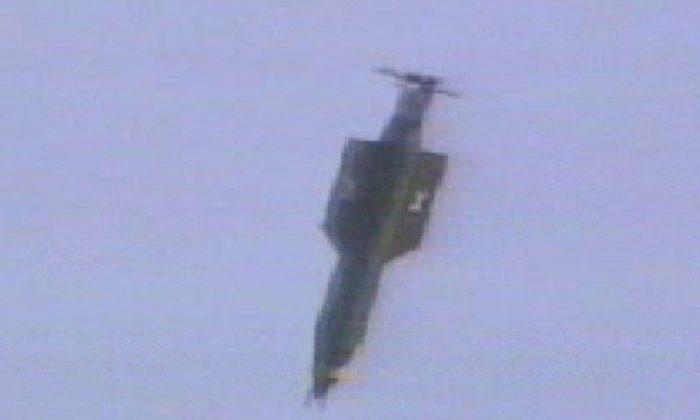WASHINGTON—The United States dropped a massive GBU-43 bomb, the largest non-nuclear bomb it has ever used in combat, in eastern Afghanistan on Thursday against a series of caves used by ISIS terrorists, the military said.
It was the first time the United States has used this size of bomb in a conflict. It was dropped from a MC-130 aircraft in the Achin district of Nangarhar province, close to the border with Pakistan, Pentagon spokesman Adam Stump said.
Also known as the “mother of all bombs,” the GBU-43 is a 21,600 pound GPS-guided munition and was first tested in March 2003, just days before the start of the Iraq war.
The security situation in Afghanistan remains precarious, with a number of militant groups trying to claim territory more than 15 years after the U.S. invasion which toppled the Taliban government.
General John Nicholson, the head of U.S. and international forces in Afghanistan, said the bomb was used against caves and bunkers housing fighters of the Islamic State in Afghanistan, also known as ISIS-K.
It was not immediately clear how much damage the device did.
White House spokesman Sean Spicer opened his daily news briefing speaking about the use of the bomb and said, “We targeted a system of tunnels and caves that ISIS fighters used to move around freely, making it easier for them to target U.S. military advisers and Afghan forces in the area.”
Last week, a U.S. soldier was killed in the same district as the bomb was dropped while conducting operations against ISIS.
“The United States takes the fight against ISIS very seriously and in order to defeat the group, we must deny them operational space, which we did,” Spicer said.
He said the bomb was used at around 7 p.m. local time and described the device as “a large, powerful and accurately delivered weapon.” The United States took “all precautions necessary to prevent civilian casualties and collateral damage,” he said.
U.S. officials say intelligence suggests ISIS is based overwhelmingly in Nangarhar and neighboring Kunar province.
Estimates of its strength in Afghanistan vary. U.S. officials have said they believe the movement has only 700 fighters but Afghan officials estimate it has about 1,500.
ISIS’s offshoot in Afghanistan is suspected of carrying out several attacks on minority Shi'ite Muslim targets.
The Afghan Taliban, which is trying to overthrow the U.S.-backed government in Kabul, are fiercely opposed to ISIS and the two group have clashed as they seek to expand territory and influence.





